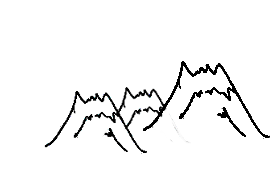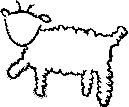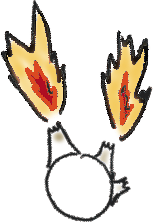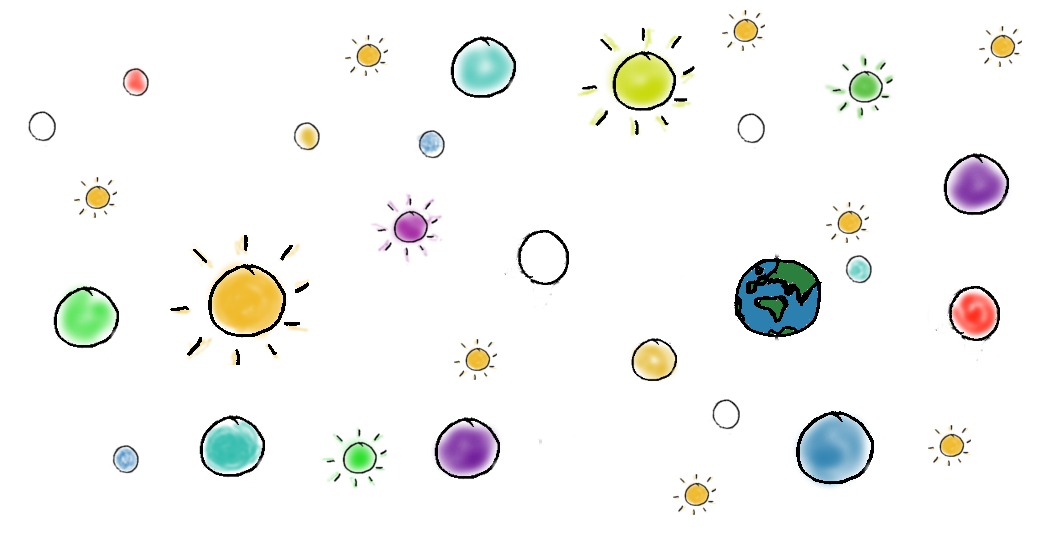[⚠ This is a misleading draft]
Regardez le ciel. Demandez-vous: le mouton oui ou non a-t-il mangé la fleur? Et vous verrez comme tout change… Et aucune grande personne ne comprendra jamais que ça a tellement d’importance!
Antoine de Saint-Exupéry, Le Petit Prince
[⚠ It has been brought to my attention that this post could be misunderstood as advocating for a mechanistic vision of the world. This is so far from being the case, it must be that I dramatically failed this post. Until I rewrite it, please be wary when reading this post.]
See this sun …

… that continuously turns on and off

… and that shines on a little planet , home to 1 little prince, 1 beautiful flower, 3 volcanoes and a sheep.




On this little planet we say that it is day-time when the sun shines, and night-time when it doesn’t.
At night-time, the little prince takes care of the volcanoes. Two of them are still active. They have to be swept often lest they erupt. Fortunately, even though they are called active volcanoes, they still are lazy. Whatever happens, they never wake up when it’s day-time to their knowledge. At day-time, the beaming sun overshadows their efforts. They are so much more remarkable at night-time.

At day-time, the little prince takes great care of his beautiful flower. Especially, he listens to her.

Far away, is a distant planet

that spins in the opposite direction of the clock-hands that are made on this planet:

And because of this, there too is something called day-time and something called night-time.

Back on the little prince’s little planet, whenever the two lazy active volcanoes wake up, they turn the little planet into a rocket

… that spins around the distant planet in the direction of clock-hands. And because of how fast and powerful the little planet-rocket is, because of the distant planet’s fundamental disagreement with clock-hands, in matters relating to spinning directions, the little rocket-planet brakes the distant planet’s movement to a complete halt. When this happens, the distant planet is said to be in a perfectly unstable state of perfect stability. In this state of the distant planet, day-time and night-time only exist in people’s memories. Day-place and night-place take over. And to everything the distant planet is home to — people and clock-hands included — this is obviously a matter of huge importance.
As you possibly know, the little prince cares deeply for his beautiful flower. If something were to happen to her, for instance if the sheep was to eat her, the little prince would be engulfed by infinite sadness. And when the little prince is engulfed by infinite sadness, he tends to sit quietly, captivated either by the beauty of a sunset or the longing for another one.
If the sheep ever ate the flower, if the little prince ever tarried after the sun set, far away, on a distant planet, everything would be different.
For now, planets are spinning or not spinning according to plan, in perfectly stable states of perfect instability. And if you were a distant astronomer this is what you might observe:
(of course, you wouldn’t be able to observe the little prince himself, nor the beautiful flower, let alone the lazy volcanoes: all the things the little planet is home to are far too small and too distant to observed from a distance (and anyway, the lazy volcanoes and the beautiful flower all are on the same side of the little planet = the side the little prince spends the most time on = the side opposite to the side distant observers observe)).
However good at observing might you be, however powerful and accurate might your observing tools be, as far as you’d be able to tell — as far as any other fully competent, trustworthy, well-equipped observer would be able to tell– the alternating sun, the little planet, and the distant planet have nothing to do with each other (except perhaps that all three of them can be observed using the same telescopic device).

Distant observers have no reason to suspect the possibility of an interaction between the two planets. And there is nothing they can do about it. Actually, there is no reason there ever will be anything they can do about it. It’s all in the hands of the little planet, its lazy volcanoes, the little prince, the beautiful flower and the sheep.
And even if the distant planet were to stop spinning, the little planet would certainly be one of the last places distant observers would look for explanations. Of course it would make more sense to them to first turn to the objects that they actually know have some sort of impact on the distant planet. Once they’d investigated each of these one by one, assuming they hadn’t already stumbled across something that could act as a satisfactory explanation to them, they probably start considering all the other objects.

You might be thinking
“All this is very nice but how does it affect scientists?
Scientists are not going to start adding to their theories to account for every possibility they can think of but not observe, are they?“
No they are not! Why would anyone with the least intention of developing a useful theory want to do that?! To understand significant possible similarities and differences in triangles, mathematicians did not have to list all the possible similarities and differences they could think of
(one triangle could have the shape of a broken piece of glass, contrary to another, one triangle could be colored in green by a child while a different triangle would be too tiny for that, one triangle could be seen, one triangle could be just as frequent in nature as another…)
Mathematicians simply started at the beginning: the definition of a triangle. With no telescopes, no Excel tables, and no speculation at all, they managed to go a long way.
But what does it generally mean for a scientist to start at the beginning?
Well, for now, let’s just say that starting at the beginning is one of the main purposes of this platform, and that it involves looking closely at the definitions of our models and of our theories, telling one from the other and also telling both from formalisation.
Contrary to flowers, cows, electric fields and perfectly triangular pieces of glass perhaps, triangles – as they are theoretically defined by geometry – like Newtonian forces and infinite sadness are not found lying around in nature waiting for something or someone to (bear) witness (to) them. Humans and scientists can name the things and phenomena they take interest in. But as it turns out, they can do much more. They can design theories to ground models on, and delineate models to inform on what they take interest in. None of this suggests there is a realisation in nature of a triangle that is objectively better than all the rest. Nor that triangles are ultimately better than squares in capacity of formalisation of natural things. You are right to be wondering where all this is going… The answer will come later. For now, please trust me with this: it somehow all boils down to a chicken and eggcf the little prince post (not ready yet though) cf "Perspectives and networks" on arxiv It suffice to agree that no model captures Everything to derive that it is impossible to prove that the properties of a model are properties of a real object as opposed to properties of the way we look at it, i.e. as opposed to properties of the model. Subtle differences in the way we look at an object can result in far from subtle differences in the ways to understand how it works. Under such conditions, since we only ever consider an object from a perspective (in other terms, since we never are god (assuming god is something who can simultaneously see absolutely Everything from absolutely Every point of view (assuming that even makes sense)), it makes no sense scientifically to be talking of real objects as opposed to models or perspectives, nor does it therefor make any sense to compare to one another models/perspectives in terms of anything that is not a model/perspective. More situation. And because this particular chicken and eggcf the little prince post (not ready yet though) cf "Perspectives and networks" on arxiv It suffice to agree that no model captures Everything to derive that it is impossible to prove that the properties of a model are properties of a real object as opposed to properties of the way we look at it, i.e. as opposed to properties of the model. Subtle differences in the way we look at an object can result in far from subtle differences in the ways to understand how it works. Under such conditions, since we only ever consider an object from a perspective (in other terms, since we never are god (assuming god is something who can simultaneously see absolutely Everything from absolutely Every point of view (assuming that even makes sense)), it makes no sense scientifically to be talking of real objects as opposed to models or perspectives, nor does it therefor make any sense to compare to one another models/perspectives in terms of anything that is not a model/perspective. More situation happens to be irrelevant to scientists, it follows that…
as a scientist, one never talks of anything else than something that is a model
(something designed to be useful as in informative). So there is no problem in scientists not being aware of the little prince and his inclination to infinite sadness. What matters is that scientists don’t get stuck confusing the little prince so adamantly with a piece of a formal model – such as a Boolean Automata in a Boolean Automata Network -that they no longer find interest in looking at things a different way. Models like perspectives can be changed, they are not theories.
Also incidentally, notice that the discussion above is simultaneously applied (it is applied to the little prince’s situation and relies on properties of this particular situation), fundamental (it is not just about the little prince’s situation, rather it is about very fundamental questions like Can we characterise conditions in which we presently have no means of seeing interacting objects as otherwise than totally independent?) and not formal (unless Saint-Exupéry’s story is too) although it actually directly follows from just a renaming of the parts of an instance of a purely mathematical object called Boolean Automata Network that has a history of serving extensively for the modelling of “natural networks”:

which can be represented like this:

or equivalently like this:
… so would you say the discussion above is theoretical or not theoretical?
….. to be continued. (to do…. On models, perspectives, visible things, invisible things, big things, small things, and all things in between)


